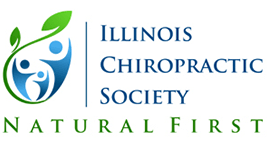Vertigo is the sensation of motion that involves the perception of spinning or rotation of the body or surroundings when one is stationary. It often is accompanied by nausea, vomiting, hearing loss and tinnitus (ear ringing). Episodes range from mild and transient to severe attacks that last for several days. Dizziness often is used to describe symptoms of vertigo, but dizziness is a distinct sensation of lightheadedness, faintness or unsteadiness that is self- limiting. Most people have experienced some form of dizziness as a result of getting up too quickly from a sitting or lying down position or at the end of an amusement park ride. Recurring episodes of vertigo increase the risk of injury from falling and can cause significant interruption to everyday life, depending on severity, duration and frequency, prevent a person from performing his or her normal, everyday duties. Physicians in the U.S. report more than five million vertigo visits a year, making it among the 25 most common reasons Americans visit a doctor, according to Vestibular Disorders Association (VEDA), 1999.
Tests and Diagnosis of Vertigo
It is important to diagnose the cause of vertigo as quickly as possible to rule out serious conditions such as cardiovascular disease, stroke, hemorrhage or tumor. Diagnosis requires a complete review of clinical history, a physical and neurological examination. The physical examination includes measuring blood pressure and heart rate, and the neurological examination consists of testing facial and vestibular nerves and muscles, strength, coordination, balance and walking (gait).
Extended diagnosis might be required such as blood tests and imaging tests (e.g. X-ray, CT scan and MRI). Patients can facilitate the diagnosis process by keeping a simple diary with entries that describe what happened before symptoms began, a description of the symptoms, duration and any information about what improved or worsened symptoms.
What Causes Vertigo?
Vertigo might result when something affects the vestibular structures of the inner ear, which, in conjunction with the brain, control sense of balance and eye movements. It also can occur when there is a problem in the brain or in the nerves connecting the brain and inner ear. If illness or injury damages those systems, vertigo and difficulties with balance, vision or hearing often result.
Common causes of vertigo include motion sickness, viral infections, extreme stress, allergies, a reaction to a particular medication, Ménière’s 6 Common causes of vertigo include motion sickness, viral infections, extreme stress, allergies, a reaction to a particular medication, Ménière’s disease, tumors, auditory disorders, circulatory problems and migraine headaches.
Another common cause of recurring episodes of vertigo is trauma to the head, neck, shoulders or back. That type of vertigo is referred to as cervicogenic vertigo.
The top-three sources of trauma that cause cervicogenic vertigo are car accidents, slip and fall accidents and sports injuries. In some cases, many months might pass before vertigo appears, which explains why many people don’t connect the symptoms to the injury.
Impact to those areas can cause the vertebrae in the upper neck to become misaligned and remain in a stressed position. Those misalignments interfere with nerve function between the brain and nerves connecting the brain and inner ear, resulting in vertigo symptoms.
In my practice, diagnosis begins with a comprehensive physical exam, neurological tests, a spinal exam and X-rays of the upper neck. Treatment can begin immediately after diagnosis, with a series of gentle adjustments to correctly reposition the misaligned vertebrae. Upper cervical chiropractic techniques are a highly effective and specialized approach to eliminate cervicogenic vertigo and the migraine headaches that often accompany it.
Treatment of vertigo should be aimed at the underlying illnesses, and determining the root cause requires diligence and patience, particularly in the diagnosis phase. Several medical professional opinions, test and trials might be necessary before permanent relief occurs.











